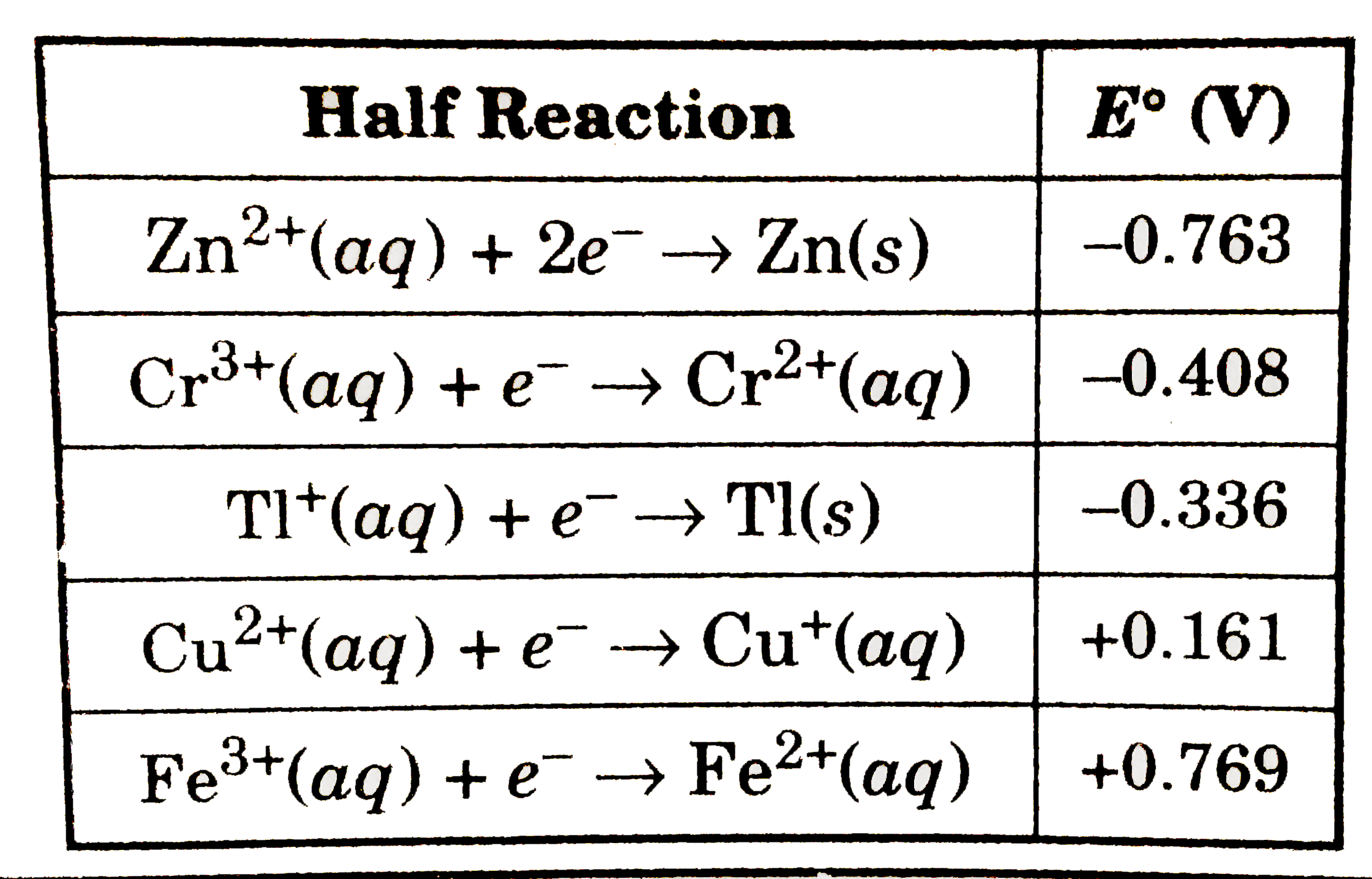Find out total number of cation(s) that produce precipitate with aqueous solution of Na2CO3.
Cu2+(aq.),Mg2+(aq.),Fe3+(aq.),Pb2+(aq.),Al3+(aq.),Hg2+(aq.),Zn2+(aq.),NH+4(aq.),Cs+(aq.)
The correct Answer is:7
All carbonates are water insoluble except (NH4)2CO3 and alkali metal carbonates.
thus (NH4)2CO3andCs2CO3 are only water soluble while others are insoluble.
Topper's Solved these Questions
Similar Questions
Find out the number of cation (s) which form(s) black ppt. (soluble in hot and dilute HNO3) on passing H2S gas into their salt solution?
Mg2+(aq.)Cu2+(aq.),Ba2+(aq.),Fe3+(aq.),Ag+(aq.),Al3+(aq.),Hg2+(aq.),Pb2+(aq.),Mn2+(aq.)
View SolutionFind out the number of cation (s) which form(s) black ppt. (soluble in hot and dilute HNO3) on passing H2S gas into their salt solution?
Mg2+(aq.)Cu2+(aq.),Ba2+(aq.),Fe3+(aq.),Ag+(aq.),Al3+(aq.),Hg2+(aq.),Pb2+(aq.),Mn2+(aq.)
View Solution
Knowledge Check

Based on the standard reduction potentials above, which reaction(s) is (are) spontaneous?
(P) Cr2+(aq)+Fe3+(aq)→Cr2+(aq)+Fe2+(aq)
(Q) Cu2+(aq)+Fe2+(aq)→Cu2+(aq)+Fe3+(aq)AP onlyBQ onlyCBoth P and QDNeither P nor QThe Bronsted acids in the reversible reaction are HCO−3(aq.)+OH−(aq.)CO2−3(aq.)+H2O
AOH− and CO2−3BOH− and H2OCHCO−3 and H2ODHCO−3 and CO2−3
Find number of basic radicals among the following cations, which can form soluble complex on adding excess of NH4 solution.
Cd2+(aq.),Pb2+(aq.),Ni2+(aq.),Mn2+(aq.),Zn2+(aq.),Ag+(aq.),Hg2+(aq.),Fe3+(aq.),Mg2+(aq.)
View SolutionFind total number of metal cations which are ppted as metal sulphide on passing H2S gas through metal salt solution.
Pb2+(aq.), Mn2+(aq.), Sn2+(aq.), Cr3+(aq.), Mg2+(aq.), Hg2+(aq.), Cu2+(aq.), Ag+(aq.), Al3+(aq.), Ni2+(aq.)
View SolutionAmong the following, total number of cations that tend to form soluble complex with excess NH4OH(aq) and excess NaCN(aq):
Pb2+,Cd2+,Hg2+,Bi3+,Cu2+,Ag+
View SolutionUsing the standard electrode potentials given in Table, predict if the reaction between the following is feasible:
a.Fe3+(aq) and Ic−(aq)
b. Ag⊕(aq) and Cu(s)
c. Fe3+(aq) and Brc−(aq)
d. Ag(s) and Fe3+(aq)
e.Br2(aq) and Fe2+(aq).
View SolutionUsing the standard electrode potentials given in Table, predict if the reaction between the following is feasible:
a.Fe3+(aq) and Ic−(aq)
b. Ag⊕(aq) and Cu(s)
c. Fe3+(aq) and Brc−(aq)
d. Ag(s) and Fe3+(aq)
e.Br2(aq) and Fe2+(aq).
View SolutionWrite the half reaction for the following redox reaction
(a)2Fe3+(aq)+2I−(aq)→2Fe2+(aq)+I2(aq)
(b)Zn(s)+2H+(aq)→Zn2+(aq)+H2(g)
(iii) Al(s)+3Ag+→Al+3(aq)+3Ag(s)
View Solution
